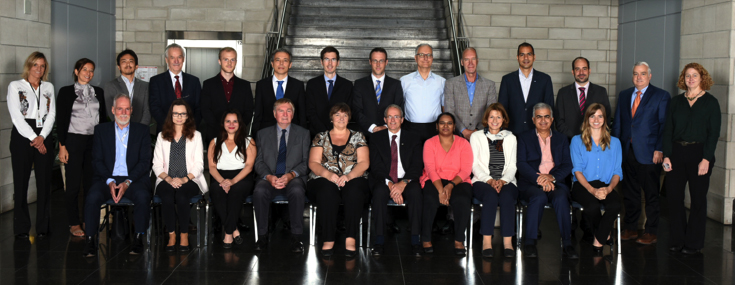The role of aviation in humanitarian assistance: collaboration on airport efficiency for effective disaster response
Over the past decade, disasters have exacted a heavy toll on the safety of persons, communities, and countries alike. Over 700,000 lives have been lost, and more than 1.4 million people have been injured, with nearly 23 million displaced persons as a result. These translate into a staggering $1.3 trillion or so in economic losses.

The International Civil Aviation Organisation (ICAO) and the United Nations Office for the Co-ordination of Humanitarian Affairs (OCHA) recently co-chaired the Second Focus Task Force (FTF) Meeting on Airport Efficiency for Effective Humanitarian Assistance and Disaster Response at the ICAO’s headquarters in Montréal, Canada.
Representatives from Airports Council International (ACI); Civil Air Navigation Services Organisation (CANSO); Deutsche Post DHL (DP-DHL); the International Air Transport Association (IATA); Delft University of Technology (TU Delft); the United Nations Development Programme (UNDP); and the World Food Programme (WFP) attended the three-day event (pictured above).
Delivering opening remarks on behalf of ICAO Secretary General, Dr Fang Liu, the Director of the Organisation’s Air Navigation Bureau, Stephen Creamer, stressed the vital role of air transport in providing speedy assistance in the immediate aftermath of disasters.
“In February 2017, during the Humanitarian Networks and Partnerships Week (HNPW), a group of experts met to discuss key challenges related to airports in the first hours after a disaster and to identify actionable solutions to improve efficiency,” Creamer underscored. “A key recommendation from the session was to create this Focus Task Force to address the bottlenecks or inefficiencies at airports during humanitarian relief operations.”
Acknowledging that progress on disaster preparedness and relief support can only be made through partnerships and collaborative efforts involving stakeholders, Creamer underscored ICAO’s commitment to supporting the sustainable development of aviation to meet humanity’s goals as contained in the Sustainable Development Goals, (SDGs), while working closely with both governmental and non-governmental institutions to achieve this.
“I am pleased to see that this is truly a team effort; one that involves the humanitarian relief community, our partners in the United Nations System, and colleagues representing the aviation industry,” he continued.
Participants of the FTF meeting agreed to address the issues that adversely affect effective co-ordination between the humanitarian response and aviation communities. These issues include: The expansion of aviation provisions to meet the needs of humanitarian relief, based on criticality; the creation of guidance for airports on preparedness and contingency planning; and the establishment of a cross humanitarian and aviation sector activation mechanism; following the sudden onset of disasters.
As a result, they proposed the formation of information systems that would be used by the humanitarian and aviation communities, in collaboration with governments, in order to prioritise enhanced relief support during humanitarian crises.
Recognising the crucial role of appropriate guidance material in aviation-related disaster preparedness and planning in states and airports, the meeting encouraged the development of an ICAO Guidance Document. It advocated the use of already available material and tools to determine the gaps in the current guidance, the findings of which will be incorporated into the new document. The meeting identified an upcoming workshop under the Get Airports Ready for Disaster (GARD) programme, an airport preparedness programme launched by UNDP and DP-DHL, as one of these tools. ACI has offered to lead the development of this guidance material.
A key consideration at the meeting was the proposal for Support for Effective Aviation Sector Disaster Response. As part of this, the GARD Programme of airport workshops – which may be merged into a wider, jointly-accredited programme – was highlighted as requiring institutional and financial support for future development of the programme, and to provide support to implement follow-up actions resulting from workshops it has held.
Consensus was also reached on the need to develop a more strategic approach to the development and maintenance of ICAO contingency plans, the success of which will require the active participation of the UN aviation agency’s regional offices and other stakeholders. Under the proposed arrangement, contingency plans would take into consideration natural disasters which, based upon historical data, are likely to occur. The contingency plans would prioritise the needs of nearby states and regions, and will be based on major traffic flows.
The Third FTF Meeting will take place in February 2019 during the Fifth HNPW in Geneva. Read CRJ's article on Volga-Dnepr's discussion forum held at Farnborough International Airshow, in issue 13:4 for more background on humanitarian air logistics - click here